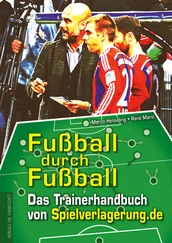Relocating the base took a month. During that time, work on macro-nuclei capture (they referred to them as strings now) continued uninterrupted; by the time the move was complete, nearly three hundred strings had been captured and stored. Most of them were lightweight nuclei. It appeared that in the macro-universe, as in ours, lighter elements like hydrogen were most plentiful. But Ding Yi staunchly opposed defining them using terms like “macro-hydrogen” and “macro-helium,” since it was now known that the elemental system of the macro-universe was completely different. It had an entirely unknown periodic table whose elements were not in one-to-one correspondence with our own.
The captured strings were stored in simple, hastily assembled warehouses in the Gobi Desert, stuck to magnetic coils in a grid separated by at least eight meters, and subject to an isolation field to guarantee that they were kept safely apart. From a distance, these warehouses resembled greenhouses, so, to the outside world, the base was the Research Center for Anti-Desertification Plants.
The higher-ups specifically named safety concerns as the reason for relocating the base, but its location clearly suggested another possibility.
This was the spot where China had detonated its first atomic bomb. Here, just next to the base, were remains of metal towers twisted by the atomic blast and a small, nearly forgotten commemorative plaque. A short journey would take you to the nuclear weapon proving ground: buildings and bridges constructed to observe the effects of the nuclear explosion on them, and a large number of old armored cars used as test targets. Geiger counters no longer clicked incessantly here—radiation left by the explosion had been drained by time—and it was said that a fair number of those abandoned objects had been carted off by local farmers for sale as scrap.
* * *
A major meeting to discuss the discovery of strings was held in Beijing. It was attended by senior leaders, including the premier. Lin Yun’s father chaired the meeting. The fact that he was able to take a full day away from vital war command to hold the meeting demonstrated the strings’ importance.
After listening to two hours of technical reports by Ding Yi and the other physicists who had just been added to string research, General Lin said, “These reports have been rigorous and comprehensive. Now I’d like to ask Professor Ding to clear up a few questions for us in the plainest language possible.”
Ding Yi said, “My understanding of the physical laws of the macro-world is still very superficial. Our study of strings has only just begun. For some questions, I’ll only be able to give a very vague or even uncertain answer. I hope that you all will understand.”
General Lin nodded. “First, when two strings from light atoms collide at critical velocity, how certain are we that they will undergo fusion? As far as I am aware, only two hydrogen isotopes and He-3 can cause a fusion reaction in our world.”
“Sir, it’s hard to compare the physical elements of the macro-world with ours. The unique string structure of macro-nuclei makes it relatively easy for them to combine, so fusion reactions between macro-atoms can be accomplished with much less effort than for our atoms. And macro-particles move at velocities a great many orders of magnitude slower than our particles. That means that, from the perspective of the macro-world, a collision speed of four-hundred-odd meters per second is equivalent to fusion temperature in our world. So we can be certain of producing fusion if we achieve a collision at that critical velocity.”
“Excellent. The next, and most important, question: What will the size and effect scope of fusion energy be?”
“Sir, this question involves many variables, so it’s difficult to be certain. This is the question that I’m most concerned with, too.”
“Can we try to come up with a relatively conservative estimate, like the equivalent of fifteen or twenty megatons of TNT?”
Ding Yi shook his head with a smile. “Definitely not that high, sir.”
“For safety’s sake, we’ll base our thinking on that, then. That is roughly the biggest thermonuclear yield that humanity has detonated. In the mid-twentieth century, during US ocean tests and Soviet land tests of that yield, the destructive radius was around fifty kilometers, well within controllable range. So what’s your worry?”
“Sir, I’m afraid you’re forgetting one thing: the high selectivity that macro-particle energy discharge has for its target. Conventional nuclear fusion releases its energy without any selectivity at all. It acts upon all matter in its surroundings—air, stone, earth, and so forth—which swiftly drains it away. So while conventional fusion may be high-yield, its area of effect is limited. But macro-fusion is different. The energy it releases acts on only one specific type of matter, and all other matter is completely transparent to it. If there’s only a very small amount of that matter type, the energy drain will be small, but the area of effect will be large indeed. I’ll give you an example: a twenty megaton release of energy without selectivity would turn the region within a fifty kilometer radius to cinders, but if that energy only acted upon hair, it would be enough to turn everyone in the world bald.”
It was an amusing example, but no one laughed. The climate of the meeting remained serious and oppressive.
“Are you now able to determine a string’s specific energy release target?”
“Yes. We discovered a while ago that microwaves are modulated into a complicated spectrum when passing through a macro-electron—different spectrums for different macro-electrons, as if they were fingerprints. Macro-electrons having the same discharge targets share a spectrum. Theoretically, this method will also apply to strings.”
“But obtaining the spectrum of a particular class of macro-electron at first required discharge tests. You now believe that strings that share a spectrum with macro-electrons will also share a discharge target. Is there a theoretical basis for this?”
“Yes. We are able to prove this.”
“So what are some of the targets of the three-hundred-odd strings you have captured?”
“All kinds. The most dangerous are those that target living organisms. Fusion of those strings would have unimaginable destructive power.”
“One final question: Are there strings that release into electronic chip targets?”
“As in the case of macro-electrons, these are very rare. At the moment, we have collected only three of them.”
“Good. Thank you.” General Lin concluded his questioning, and the meeting fell into silence.
“The situation, I think, has been fully explained,” said the premier, who had kept silent until this point. “Everyone not in the leading group is dismissed.”
* * *
A thousand kilometers away, the ball lightning research base was engaged in intense preparation for macro-fusion tests.
The string accelerator rails, each of them more than ten meters long, were complete. They resembled two model railroad bridges, and, indeed, their code names were “Bridge 1” and “Bridge 2.” The two strings would be accelerated to 250 meters per second on these bridges before colliding and undergoing macro-fusion.
The strings to be used in this experiment were those with the greatest practical significance: strings that released into electronic chips.
The bulk of the work went into setting up the target area. The base began importing huge quantities of electronic waste from overseas, most of it junked computer motherboards and network cards. Under the wartime economic blockade, e-waste was among the few products it was possible to import, and it was acquired in large quantities from third parties or even directly from the enemy. It was collected domestically as well. Ultimately, eighty thousand tons of e-waste were amassed and piled into unnatural mountains in the Gobi Desert. The boards and cards, bearing a huge number of chips, were arranged in three target circles around the central fusion point, the innermost at a radius of ten kilometers, and the outermost at one hundred kilometers, which included two small county towns on the edge of the Gobi. Small yellow surveying flags were used in this region, under each of which was anchored a black sealed bag holding several boards.
Читать дальше




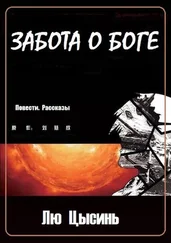

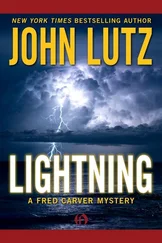
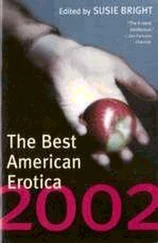
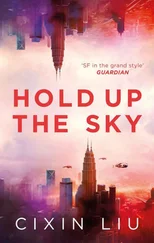
![Лю Цысинь - Эпоха сверхновой [litres]](/books/393110/lyu-cysin-epoha-sverhnovoj-litres-thumb.webp)


